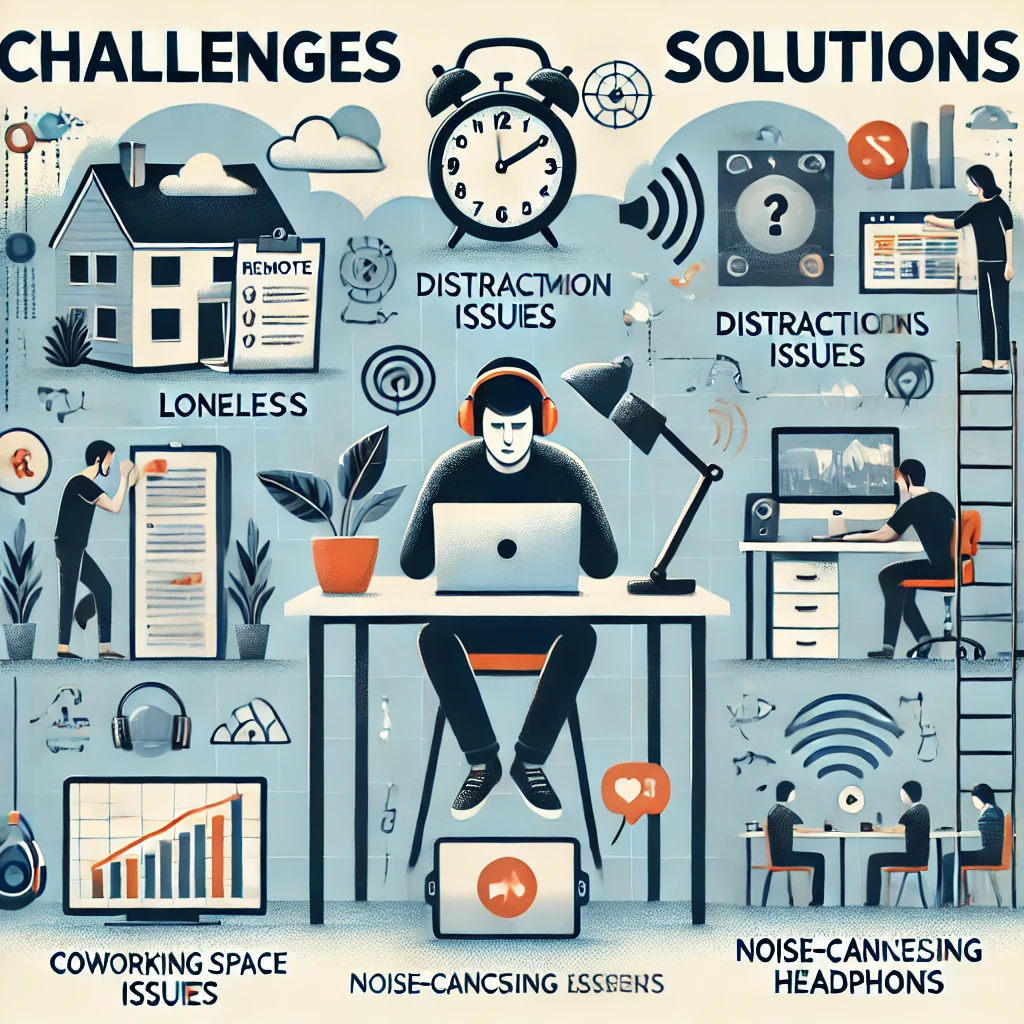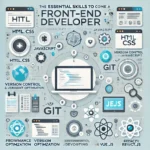How to Become a Technical Writer – Technical writing involves creating clear, concise, and informative content about complex topics. A technical writer is responsible for breaking down complicated information into simple language that the target audience can easily understand.
How to Become a Technical Writer

Roles of a Technical Writer
A technical writer’s primary role is to create documents that help people use a product or service. Their responsibilities often include:
- Researching Information: A technical writer gathers information from product managers, engineers, and other stakeholders to understand how a product works.
- Creating User Manuals and Guides: They write detailed guides to help users understand how to use products or software.
- Simplifying Technical Content: The writer translates complex technical jargon into simple, user-friendly content.
- Editing and Proofreading: They ensure the content is free from errors, clear, and easy to follow.
- Updating Documents: As products get updated, technical writers need to revise the documents to reflect the new changes.
- Collaborating with Teams: They often work with developers, designers, and product teams to get accurate information.
Essential Skills Needed to Become a Technical Writer
Becoming a successful technical writer requires a mix of technical and non-technical skills:
-
Writing Skills
Good writing skills are essential. A technical writer needs to write clearly, concisely, and with proper grammar. The ability to simplify complex information is crucial.
-
Research Skills
Technical writers must be able to research topics thoroughly. This includes understanding technical specifications, reading through code, and gathering information from experts.
-
Technical Knowledge
While you don’t need to be a programmer, understanding basic technical concepts is important. Familiarity with software, engineering, or technology can be an advantage.
-
Attention to Detail
Being detail-oriented helps in creating accurate documentation. Small errors in technical writing can lead to misunderstandings or misuse of a product.
-
Communication Skills
A technical writer must communicate effectively with various stakeholders, including developers, designers, and customers, to gather the necessary information.
How to Start a Career in Technical Writing
If you’re new to this field, follow these steps to start your career:
Step 1: Build Strong Writing Skills
Start by improving your writing skills. Practice writing clear, simple, and concise content. Focus on explaining complex ideas in simple language.
Step 2: Gain Technical Knowledge
Learn about the industry you’re interested in. Take online courses in software, engineering, or any other field you want to write about. Familiarize yourself with tools like MS Word, Adobe FrameMaker, and Markdown.
Step 3: Create a Portfolio
Build a portfolio that showcases your writing skills. Include samples like user guides, software documentation, and product manuals. A good portfolio will help you land interviews.
Step 4: Pursue Relevant Education or Certifications
While a degree in English, Journalism, or Communications is helpful, it’s not mandatory. Consider certifications like Certified Technical Communicator (CTC) or courses on platforms like Coursera and Udemy.
Step 5: Apply for Jobs or Freelance Work
Look for job openings on job boards like LinkedIn, Indeed, and Naukri.com. You can also start by taking up freelance projects to gain experience.
Industries That Hire Technical Writers
Technical writers are in high demand across many industries. Their skills are versatile, making them valuable in any field that requires detailed documentation or user-friendly content. Let’s take a look at some of the major industries where technical writers find job opportunities:
-
Information Technology (IT)
The IT industry is one of the biggest employers of technical writers. Here, writers create content like software user manuals, installation guides, troubleshooting documents, and online help systems. IT companies rely on technical writers to help customers understand how to use their software and digital products.
Key Documents:
- Software documentation.
- API guides.
- User interface (UI) instructions.
- System architecture manuals.
-
Software Development
In software development, technical writers play a crucial role in creating product documentation that explains how a software application works. They collaborate closely with software engineers and developers to document code functions, write release notes, and prepare developer guides.
Key Documents:
- User guides.
- Developer documentation.
- Code explanations.
- Release notes.
-
Healthcare and Medical Devices
In the healthcare industry, technical writers prepare documents for medical devices, pharmaceuticals, and healthcare software. They help create user instructions, product labels, clinical trial reports, and regulatory documents. This industry requires a high level of accuracy because the information impacts patient safety.
Key Documents:
- Medical device user manuals.
- Regulatory compliance documents.
- Clinical trial reports.
- Patient information leaflets.
-
Manufacturing
The manufacturing industry needs technical writers to document complex machinery, industrial equipment, and production processes. They create technical manuals, maintenance guides, and standard operating procedures (SOPs) to help users understand how to operate and maintain equipment safely.
Key Documents:
- Product manuals.
- Maintenance guides.
- Standard operating procedures (SOPs).
- Safety guidelines.
-
Finance and Banking
In the finance sector, technical writers create clear and precise documentation for financial software, online banking systems, and investment platforms. They write content that helps both internal teams and customers understand the features and functions of financial products.
Key Documents:
- User guides for financial software.
- Compliance and regulatory documents.
- Product descriptions.
- Security and privacy guidelines.
-
Telecommunications
Telecommunications companies hire technical writers to create documents related to network equipment, mobile devices, and communication software. They help explain complex technologies like 5G networks and internet protocols in a way that is easy for customers and engineers to understand.
Key Documents:
- Network setup guides.
- Equipment manuals.
- Customer support content.
- Product specifications.
-
E-Learning and Education
The e-learning industry also offers opportunities for technical writers. They create instructional content for online courses, tutorials, and training materials. Technical writers help simplify educational content so that learners can easily grasp complex subjects.
Key Documents:
- Course content.
- Training manuals.
- E-learning tutorials.
- Assessment guides.
-
Aerospace and Defense
Aerospace and defense industries need technical writers for highly specialized documents. These writers produce content for aircraft manuals, defense system documentation, and technical reports. Due to the complexity of the products, technical writing in this field often requires knowledge of engineering principles.
Key Documents:
- Aircraft maintenance manuals.
- System operation guides.
- Technical specifications.
- Compliance reports.
-
Consumer Electronics
In the consumer electronics industry, technical writers create user guides and product manuals for gadgets like smartphones, tablets, and smart home devices. Their goal is to make sure that users understand how to set up and use the devices without confusion.
Key Documents:
- Product manuals.
- Quick start guides.
- Installation instructions.
- Troubleshooting guides.
Challenges and Tips for Success as a Technical Writer
Becoming a successful technical writer requires overcoming certain challenges. Here are some common difficulties faced by technical writers and tips on how to handle them:
Challenges:
- Understanding Complex Technical Concepts
One of the biggest challenges for technical writers is understanding highly technical information, especially if they do not have a strong background in the subject. It can be hard to explain concepts clearly without fully grasping them.
Tip: Work closely with subject matter experts (SMEs). Ask questions and seek clarification until you have a thorough understanding of the topic. Don’t hesitate to research and learn new technologies.
- Keeping Up with Rapid Changes.
In industries like software and IT, products and technologies change quickly. Technical writers need to constantly update documents to keep them relevant.
Tip: Stay in regular contact with the product team and be aware of upcoming changes. Set reminders to review and update your documents frequently.
- Tight Deadlines.
Technical writers often face tight deadlines, especially when working on product launches. The pressure to deliver high-quality content quickly can be stressful.
Tip: Plan your projects carefully. Break down tasks into smaller parts and set personal deadlines for each section. Use project management tools like Trello or Asana to stay organized.
- Collaborating with Different Teams
Technical writers often work with various teams, including developers, designers, and product managers. Miscommunication can lead to errors in the documentation.
Tip: Schedule regular meetings with stakeholders to clarify details. Use collaboration tools like Slack or Microsoft Teams to communicate effectively and share updates.
How to Build a Strong Technical Writing Portfolio
A well-organized portfolio is essential for anyone who wants to become a successful technical writer. Your portfolio showcases your skills and writing style, helping potential employers understand your capabilities. Here’s how you can build an impressive technical writing portfolio:
- Create Sample Documents
If you are new to technical writing, start by creating your own sample documents. These can include user manuals, quick-start guides, FAQs, or how-to articles. Choose products or software you are familiar with and create documentation that explains how to use them.
- Contribute to Open-Source Projects
Many open-source projects need help with documentation. By contributing to these projects, you gain real-world experience and add valuable work to your portfolio. Platforms like GitHub often have projects looking for volunteer technical writers.
- Include a Variety of Content
Your portfolio should showcase a range of documents, such as:
- User guides.
- Troubleshooting articles.
- Product specifications.
- API documentation.
This variety shows your ability to handle different types of writing tasks.
- Use a Professional Website
Create a simple website or online portfolio using platforms like WordPress, Wix, or LinkedIn. Make sure it is easy to navigate and clearly showcases your best work. Include a short bio, contact information, and links to your documents.
- Get Feedback and Revise
Ask experienced technical writers or mentors to review your samples and provide feedback. Use their input to make improvements and polish your writing. A well-reviewed and revised portfolio makes a stronger impression on hiring managers.
Popular Tools Used by Technical Writers Technical writers use a variety of software tools to create, edit, and manage content. Knowing how to use these tools effectively can make your work easier and more efficient. Here are some of the most popular tools used by technical writers:
- Microsoft Word is a widely used word processor for creating documents. It offers a range of formatting and editing features, making it a go-to tool for many technical writers. It’s especially useful for creating simple manuals, user guides, and reports.
- Adobe FrameMaker Adobe FrameMaker is a powerful tool designed for creating long and complex documents. It is commonly used for technical manuals, books, and product documentation. FrameMaker supports structured authoring and allows writers to create templates for consistent formatting.
- MadCap Flare MadCap Flare is a popular tool for creating help systems, knowledge bases, and online documentation. It is used for creating single-source, multi-channel content, allowing writers to produce documents that can be published in different formats, such as HTML, PDF, and eBooks.
- Markdown Editors (e.g., Typora, Visual Studio Code) Markdown is a lightweight markup language used for creating formatted text. Markdown editors like Typora and Visual Studio Code are popular among technical writers for writing content in a simple, code-friendly format. Markdown is often used for API documentation and GitHub README files.
- Confluence is a collaboration tool used by teams to create and share content. Technical writers often use Confluence to work with product teams, gather information, and create living documents that can be updated in real time.
- Snagit and ScreenFlow For creating visual content like screenshots and video tutorials, tools like Snagit and ScreenFlow are invaluable. They help technical writers capture images and videos, which can be used to make guides and manuals more user-friendly.
- Grammarly and Hemingway Editor Editing tools like Grammarly and Hemingway Editor help technical writers improve grammar, clarity, and readability. They are great for ensuring that your content is error-free and easy to understand.
- Trello and Asana For project management and task tracking, technical writers often use tools like Trello and Asana. These help in organizing writing tasks, setting deadlines, and collaborating with team members effectively.
Conclusion on How to Become a Technical Writer
Becoming a technical writer offers a very good career path for those who enjoy writing and have an interest in technology. By building the right skills, creating a strong portfolio, and learning to use popular writing tools, you can set yourself up for success in this field. Start practicing your writing today, take on small projects, and continue learning to enhance your skills.












